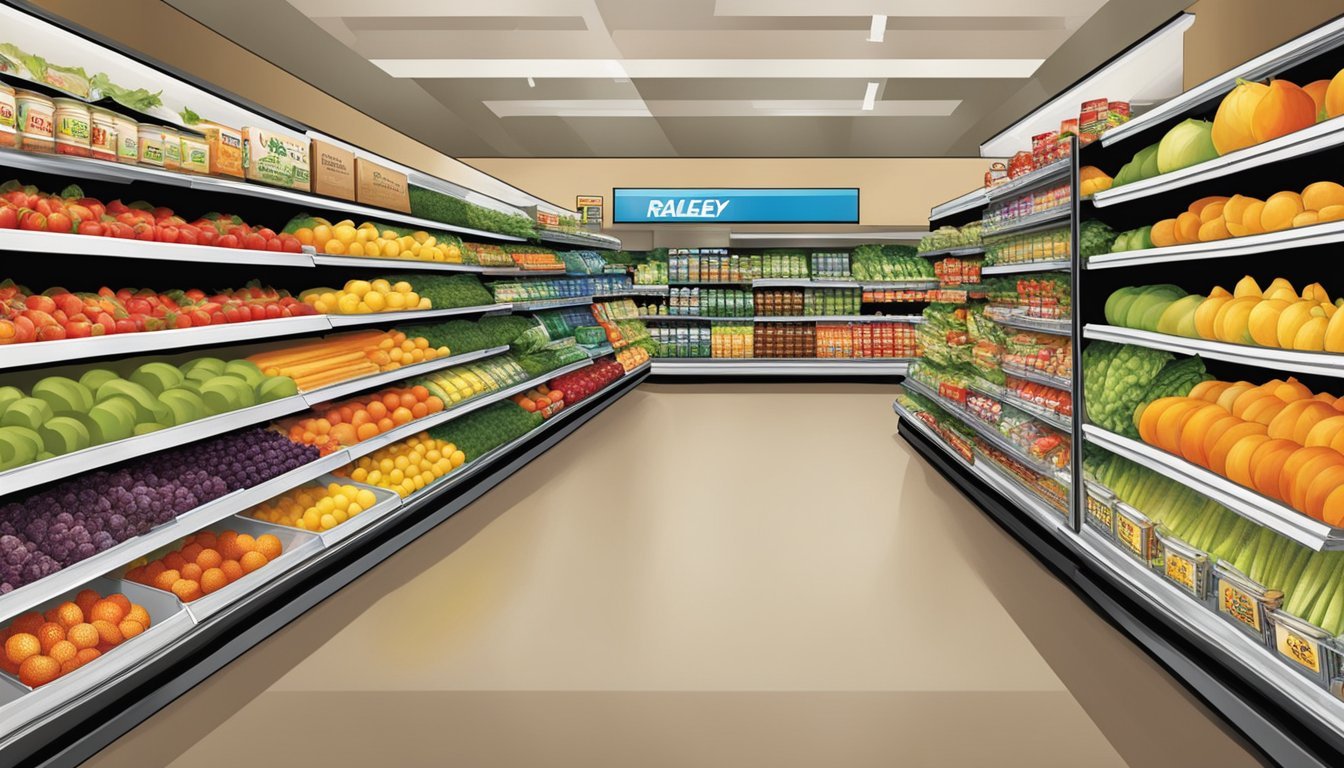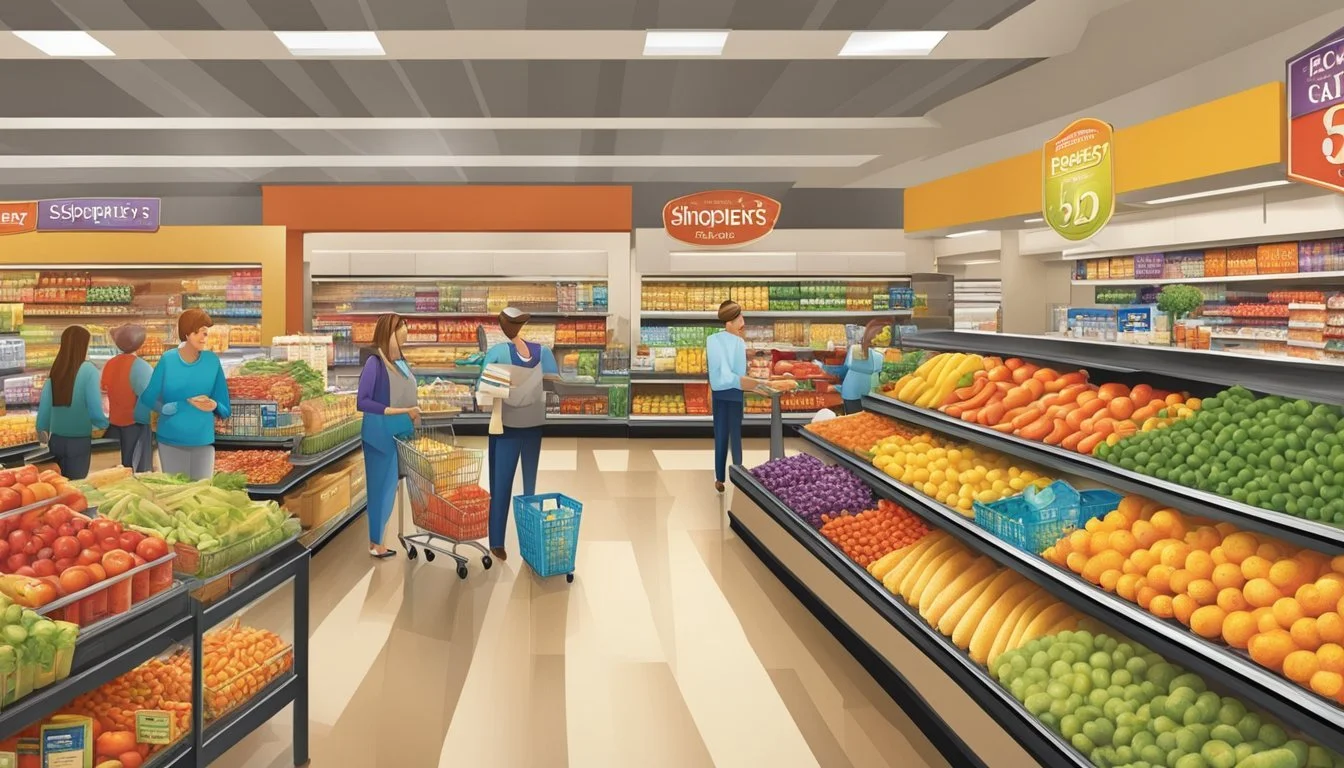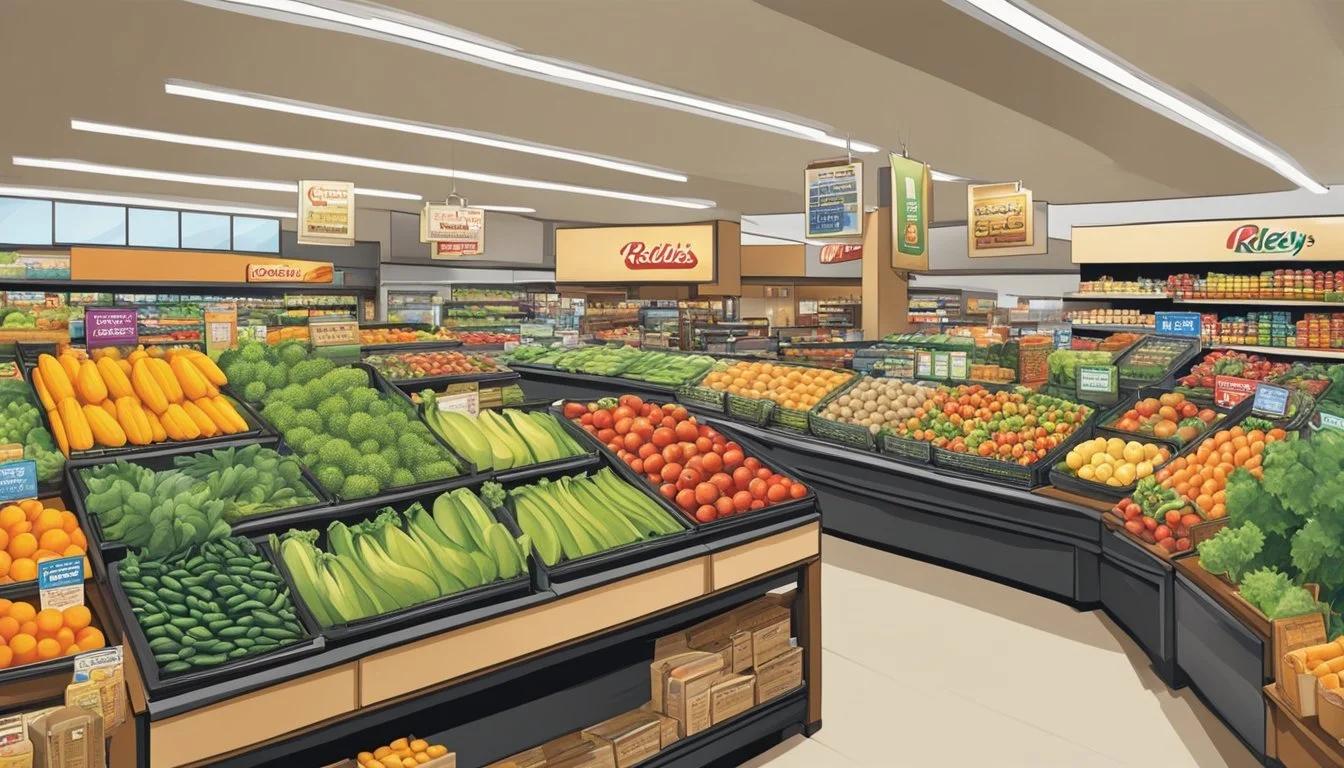Raley's vs ShopRite
A Comprehensive Comparison of Prices, Selection, and Service
Grocery shopping can be a significant part of a household's budget and routine. Two popular supermarket chains on the East Coast, Raley's and ShopRite, offer distinct shopping experiences for consumers. While both stores aim to provide quality products and competitive prices, they have unique features that set them apart.
ShopRite operates as a cooperative of independently owned stores, allowing for a more localized approach to inventory and customer service. This structure enables individual stores to cater to specific community needs. Raley's, on the other hand, is a family-owned business known for its focus on fresh, high-quality produce and commitment to sustainability.
Comparing these two grocery chains involves looking at factors such as product selection, pricing, store layout, and customer loyalty programs. By examining these aspects, shoppers can determine which store aligns best with their preferences and needs. The choice between Raley's and ShopRite ultimately depends on individual priorities and shopping habits.
Company Overviews
Raley's and ShopRite are two prominent grocery chains with distinct histories and business models. Both have grown from humble beginnings to become significant players in their respective markets.
History of Raley's
Raley's was founded in 1935 by Thomas P. Raley in Placerville, California. The company started as a single store and gradually expanded throughout Northern California and Nevada. Raley's remained a family-owned business, with Tom Raley's daughter Joyce Raley Teel and her husband Jim Teel taking over leadership in the 1990s.
The company acquired several other grocery chains over the years, including Bel Air Markets and Nob Hill Foods. Raley's is known for its focus on fresh, high-quality products and customer service. The company has also been recognized for its sustainability efforts and community involvement.
History of ShopRite
ShopRite's roots trace back to 1946 when a group of independent grocers in New Jersey formed a cooperative called Wakefern Food Corporation. These grocers united under the ShopRite banner to increase their purchasing power and compete with larger chains.
The cooperative model allowed individual store owners to maintain autonomy while benefiting from shared resources. ShopRite expanded primarily in the northeastern United States, becoming a dominant supermarket chain in New Jersey, New York, and Pennsylvania.
ShopRite is known for its competitive pricing and wide product selection. The cooperative structure has helped ShopRite adapt to changing market conditions and consumer preferences over the decades.
Store Locations and Accessibility
Raley's and ShopRite have distinct regional presences, impacting their accessibility for consumers. Each chain focuses on specific areas of the United States, influencing their market reach and customer base.
Raley's Market Presence
Raley's operates primarily in Northern California and Nevada. The chain has over 120 stores across these regions. Its stronghold is in Sacramento, where the company was founded. Raley's also maintains a significant presence in the San Francisco Bay Area and Reno, Nevada.
The company's stores are typically found in suburban and urban areas. This positioning allows Raley's to cater to a mix of city dwellers and those living in surrounding communities. In some smaller towns within its operating area, Raley's may be one of the few major grocery options available to residents.
ShopRite Market Presence
ShopRite has a much larger footprint on the East Coast. The cooperative operates over 300 stores across six states: New Jersey, New York, Connecticut, Pennsylvania, Delaware, and Maryland. New Jersey hosts the highest concentration of ShopRite stores.
ShopRite's cooperative structure allows for a diverse range of store sizes and locations. Stores can be found in urban centers, suburban areas, and even some rural communities. This flexibility enables ShopRite to serve a wide variety of area consumers, from city residents to those in less populated regions.
Price Comparison
Raley's and ShopRite offer different pricing strategies and savings opportunities for shoppers. Their everyday prices and discount programs can significantly impact grocery budgets.
Everyday Prices at Raley's
Raley's positions itself as a premium grocery chain, which is often reflected in its pricing. Many common items at Raley's tend to be priced slightly higher than at discount supermarkets. Fresh produce and high-quality meats are typically more expensive here.
Raley's private label products offer some savings compared to national brands. These store-brand items are generally priced 10-20% lower than their branded counterparts.
Everyday Prices at ShopRite
ShopRite is known for competitive pricing on everyday essentials. As a cooperative, individual store owners have some flexibility in setting prices. This can lead to variations between locations.
ShopRite's store brands are often priced very competitively. Many staple items like milk, bread, and eggs are frequently offered at lower prices than other major chains.
The chain also runs regular "Can Can Sales" with deep discounts on canned goods and other non-perishables.
Discounts and Savings Opportunities
Raley's offers a loyalty program called "Something Extra" that provides personalized deals and fuel rewards. Members can save up to $0.25 per gallon on gas at participating stations.
ShopRite's Price Plus card gives access to weekly specials and digital coupons. The chain is also known for its generous coupon policy, often allowing stacking of manufacturer and store coupons.
Both stores offer digital coupons through their apps. ShopRite tends to have a wider variety of manufacturer coupons available, while Raley's focuses more on store-specific deals.
ShopRite's circular often features more sale items compared to Raley's weekly ad. This can lead to greater potential savings for shoppers who plan their purchases around sales.
Product Range and Quality
Raley's and ShopRite both offer diverse product selections, but they differ in key areas. Their offerings span fresh produce, organic options, meats, seafood, and prepared foods.
Freshness of Produce
Raley's emphasizes locally-sourced, high-quality produce. They partner with regional farmers to ensure freshness and support local agriculture. Their produce sections often feature seasonal fruits and vegetables.
ShopRite also provides fresh produce, but with a focus on value. They offer competitive prices on staple items like apples, bananas, and lettuce. Some ShopRite stores have implemented hydroponic growing systems to provide ultra-fresh herbs and greens.
Both chains have quality control measures in place. Raley's tends to have a slight edge in produce variety, especially for specialty items.
Availability of Organic Options
Organic products are available at both stores, but Raley's typically has a more extensive selection. They offer organic versions of many fruits, vegetables, dairy products, and pantry staples.
ShopRite's organic offerings vary by location. Larger stores may have dedicated organic sections, while smaller ones integrate organic items throughout the store.
Raley's often carries more organic brands, including lesser-known local and regional options. ShopRite focuses on popular national organic brands, making them more accessible to budget-conscious shoppers.
Meat and Seafood Selection
Raley's prides itself on high-quality meat and seafood. They offer prime cuts, including filet mignon, and often have in-house butchers. Their seafood selection includes sustainably sourced options and local catches when available.
ShopRite provides a wide range of meat and seafood options at competitive prices. They offer both conventional and organic choices. Many ShopRite stores have full-service meat counters where customers can request custom cuts.
Both chains prioritize food safety and freshness in their meat and seafood departments. Raley's tends to offer more premium options, while ShopRite focuses on variety and value.
Store-Prepared Foods and Bakery
Raley's excels in store-prepared foods and bakery items. They often have in-store chefs creating fresh meals daily. Their bakeries produce artisanal breads, custom cakes, and gourmet desserts.
ShopRite's prepared foods sections vary by location. Larger stores may have hot food bars, salad bars, and made-to-order sandwiches. Their bakeries offer a mix of in-house baked goods and items from local bakeries.
Raley's generally provides more upscale prepared food options, including specialty diet-friendly choices. ShopRite focuses on family-friendly meal solutions and classic bakery items at affordable prices.
Customer Service Experience
Customer service plays a crucial role in shaping the shopping experience at grocery stores. Both Raley's and ShopRite prioritize customer satisfaction, but their approaches differ in key areas.
Service at Raley's
Raley's emphasizes a personalized approach to customer service. The store trains employees to be knowledgeable about products and attentive to shoppers' needs. Cashiers often greet customers by name, fostering a sense of community.
Raley's offers a "Something Extra" loyalty program, providing personalized deals and rewards. The store's layout is designed for easy navigation, with clearly marked aisles and helpful signage.
Customer surveys indicate high satisfaction with Raley's service. The store consistently receives positive ratings for its friendly staff and efficient checkout process.
Service at ShopRite
ShopRite focuses on efficiency and value in its customer service approach. The store employs a large number of staff to ensure short wait times at checkout and well-stocked shelves.
ShopRite's digital services, including online ordering and curbside pickup, receive praise for their convenience. The store's mobile app allows customers to access digital coupons and create shopping lists.
ShopRite conducts regular customer satisfaction surveys to improve service. Many locations offer specialized services like nutrition counseling and cooking classes, adding value for customers.
Family-owned ShopRite stores often have a personal touch, with owners actively involved in day-to-day operations and community events.
Health and Wellness Focus
Raley's and ShopRite both prioritize health and wellness, offering nutritious options and implementing initiatives to support customer wellbeing. Their approaches differ in key ways that shoppers should consider.
Nutritional Offerings at Raley's
Raley's emphasizes health through its product selection and educational efforts. The chain features a shelf guide system to help customers make informed choices. This tool highlights nutritional benefits and identifies products suitable for specific diets like gluten-free or heart-healthy options.
The store stocks a wide range of organic and natural foods. Produce sections showcase fresh, local fruits and vegetables. Raley's also carries numerous plant-based alternatives and whole grain products.
To further support health-conscious shoppers, Raley's provides clear labeling on store brand items. Up to 16 different labels may appear, detailing health benefits and dietary considerations.
Health Initiatives at ShopRite
ShopRite takes a proactive approach to customer wellness through various programs. The chain employs registered dietitians in many locations to offer free nutrition counseling and lead store tours.
These professionals create meal plans, provide recipe ideas, and answer customer questions about healthy eating. ShopRite also hosts cooking classes and wellness events to educate shoppers.
The store's "Dietitian's Selection" program highlights nutritious choices throughout departments. Products meeting specific health criteria receive special shelf tags for easy identification.
ShopRite's private label "Bowl & Basket" line includes many better-for-you options. The chain also stocks an array of organic, non-GMO, and specialty diet products to cater to diverse health needs.
Loyalty Programs and Customer Perks
Raley's and ShopRite offer distinct rewards systems to incentivize customer loyalty. Both chains provide discounts and perks tailored to frequent shoppers and families.
Rewards Systems at Raley's
Raley's Something Extra rewards program is free to join. Members earn points on purchases, which can be redeemed for discounts on future shopping trips. The program offers personalized deals based on shopping habits.
Raley's rewards scale with spending. Higher tiers unlock additional benefits like exclusive coupons and early access to promotions. Members receive fuel discounts at participating stations.
Digital coupons are easily loaded to loyalty accounts. This simplifies savings at checkout. Raley's app allows customers to track points, browse weekly ads, and create shopping lists.
Incentives at ShopRite
ShopRite's Price Plus club card is free and provides instant discounts at the register. Members gain access to digital coupons and personalized offers through the ShopRite app.
The program includes a digital coin system. Shoppers earn coins on select purchases, which can be redeemed for free products or discounts. This gamified approach encourages repeat visits.
ShopRite for My School allows customers to support local education. A percentage of qualified purchases is donated to chosen schools. This initiative has built a loyal following among families.
Special promotions offer bonus points on seasonal items. ShopRite's rewards program integrates with manufacturer coupons for increased savings.
Brand Reputation and Consumer Trust
Raley's and ShopRite have established distinct reputations in their respective markets. Consumer trust plays a crucial role in grocery store loyalty, influencing shopping habits and preferences.
Public Perception of Raley's
Raley's operates primarily in Northern California and Nevada. The chain has built a reputation for high-quality produce and excellent customer service. Raley's focuses on offering a premium shopping experience, often positioning itself as a more upscale alternative to larger national chains.
The company's commitment to local sourcing and community involvement has helped strengthen its brand image. Raley's has implemented initiatives like reducing food waste and promoting healthier eating options, which resonate with health-conscious consumers.
ShopRite in Consumer Reports
ShopRite consistently ranks well in Consumer Reports surveys. The cooperative structure allows individual stores to tailor their offerings to local preferences while benefiting from the buying power of a larger organization.
Consumer Reports has noted ShopRite's competitive pricing as a key factor in customer satisfaction. The chain's private-label products have received positive ratings for quality and value.
ShopRite's loyalty program and digital coupons are popular among budget-conscious shoppers. The chain's ability to balance affordability with product quality has helped maintain strong consumer trust in competitive markets.
Environmental Sustainability Practices
Both Raley's and ShopRite have implemented eco-friendly initiatives to reduce their environmental impact. These grocery chains focus on waste reduction, energy efficiency, and sustainable sourcing to promote a greener future.
Raley's Green Initiatives
Raley's has embraced new ESG (Environmental, Social, and Governance) reporting standards for the grocery industry. This demonstrates their commitment to transparency and accountability in sustainability efforts. The chain has invested in energy-efficient lighting and refrigeration systems across its stores.
Raley's prioritizes sustainable sourcing by partnering with local farmers and suppliers. This reduces transportation emissions and supports regional economies. The company has also implemented a comprehensive recycling program for plastic, paper, and cardboard.
To minimize food waste, Raley's donates edible surplus food to local food banks and charities. Inedible food scraps are composted or used for animal feed when possible.
ShopRite's Eco-Friendly Approach
ShopRite has made significant strides in reducing food waste. The chain donates over 5,000 tons of fresh food annually to combat hunger and prevent edible food from ending up in landfills. Inedible food waste is composted, further reducing environmental impact.
Energy conservation is a key focus for ShopRite. Stores utilize LED lighting and energy-efficient refrigeration systems to lower electricity consumption. Many locations have installed solar panels to generate clean energy on-site.
ShopRite has implemented a plastic bag reduction program. Stores encourage customers to use reusable bags and offer recycling bins for plastic bags and packaging. The chain also promotes the use of recyclable and compostable packaging for its store-brand products.
Conclusion
Raley's and ShopRite both offer unique advantages for grocery shoppers. Raley's stands out for its focus on high-quality, locally-sourced products and excellent customer service. The company's commitment to sustainability and community involvement resonates with many consumers.
ShopRite, as a cooperative of independent retailers, provides competitive pricing and a wide range of store-brand options. Their strong presence in the eastern United States has built a loyal customer base over decades.
The choice between these two chains ultimately depends on individual preferences and priorities. Shoppers seeking premium products and a personalized experience may lean towards Raley's. Those focused on value and variety might find ShopRite more appealing.
Both stores have adapted to modern shopping trends, offering online ordering and delivery services. They continue to evolve their offerings to meet changing consumer demands.
In the end, the "better" grocery store is subjective. Factors like location, product selection, pricing, and store atmosphere all play a role in each shopper's decision. Both Raley's and ShopRite have carved out their own niches in the competitive grocery market.










